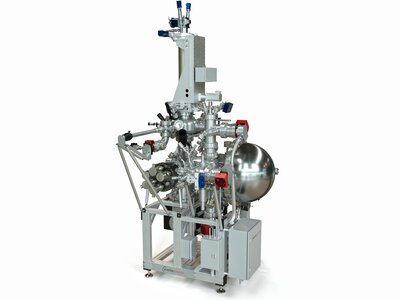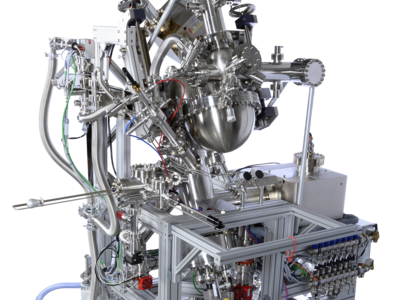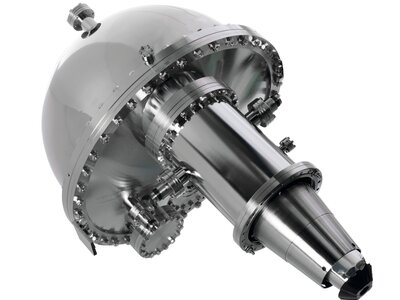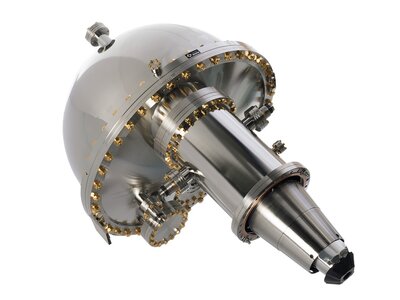Spin- and Angle-Resolved Photoelectron Spectroscopy (Spin-ARPES)
Angle resolved photoelectron spectroscopy (ARPES) is the overarching name of several photoelectron spectroscopies where the electron’s energies and emission angles relative to the sample surface are measured. With these quantities, it is possible to get information about the electronic band structure of the examined samples, because the emission angle bears a direct connection to the momenta of the electrons prior to photoexcitation. Modern, sophisticated ARPES setups are also equipped with spin detectors. ARPES experiments employ a variety of different photon energies and experimental boundary conditions (e.g. Laser-ARPES, µARPES or ARTOF), and are usually much more demanding on the experimental hardware than simple XPS or UPS measurements (e.g. quality of magnetic shielding, photon spot size of the sample, temperature stability etc.).
Spin- and angle-resolved PES (Spin-ARPES) can be achieved by coupling a spin detector (either a VLEED setup or a Mott detector) to the hemispheres of a conventional ARPES analyser. These detectors utilize asymmetries in scattering cross sections of electrons with specific targets: electrons with up-spin experience different scattering than electrons with down-spin.
Images taken from: https://doi.org/10.1107/S1600577517006907: Very efficient spin polarization analysis (VESPA): new exchange scattering-based setup for spin-resolved ARPES at APE-NFFA beamline at Elettra [Bigi et al. (2017). J. Synchrotron Rad. 24, 750-756





